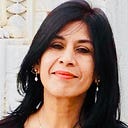The young ones…in Ireland, Senegal…
It’s been a month since Ireland got its youngest prime minister and Senegal gave the African continent its youngest elected president, so here’s some crucial context on the small but growing club of young politicians in high office. Read the April10 edition of This Week, Those Books or sign up at https://thisweekthosebooks and get the post the day it drops
The Big Story:
Ireland got its youngest prime minister, 37-year-old Simon Harris, one week after Senegal gave the African continent its youngest elected president, 44-year-old Bassirou Diomaye Faye. Both men’s relative youth is evident in their style of work and play. Harris is nicknamed the “TikTok Taoiseach” (Irish for leader) because of his social media skills. Faye, who engages often on Facebook, wears wireless earbuds and the traditional caftan rather than Western-style suits.
Harris and Faye are part of a small but growing club of young politicians in high office. Here are some other young national leaders today, in order of their rise to the top job:
- Nayib Bukele, 42 — re-elected president of El Salvador in February
- Gabriel Attal, 34 — became France’s youngest-ever prime minister in January
- Humza Yousaf, 37 — Scotland’s First Minister since March 2023
- Rishi Sunak — at 42, became the UK’s youngest prime minister in more than 200 years in October 2022
- Chile’s President Gabriel Boric — 35 when he won the December 2021 election
The Backstory:
Young leaders rise — or fail — because of the system.
- Worldwide, parliaments are getting a tad younger, according to a 2021 report from the Inter-Parliamentary Union (IPU), an international organisation of national parliaments.
- Some 30% of members of parliament in the world are under the age of 45.
- Rwanda, Morocco, Kenya and Uganda have reserved parliamentary seats for young representatives.
- Norway has the highest proportion of young politicians in the world, with 13.6% under 30.
- In November 2022, 25-year-old Maxwell Frost became the first member of the US Congress to belong to Gen Z, which loosely consists of people born between 1995 and 2010. But the United States, the world’s oldest continuous democracy, bucks the youthful trend overall with its leaders growing older and older. The November 5 presidential election will see 82-year-old Joe Biden run against 78-year-old Donald Trump.
This Week, Those Books:
- A young activist’s “manifesto of the youth revolution”.
- A masterpiece by one of Nigeria’s greatest writers on how youthful political idealism can falter and corrode.
- Youth to Power: Your Voice and How to Use It
By: Jamie Margolin (foreword by Greta Thunberg)
Publisher: Hachette Go
Year: 2020
Jamie Margolin was a teenager when she wrote this “guide to causing good trouble”. Swedish activist Greta Thunberg describes the book as a “toolbox”. That’s a good word for a text that lays out simply and clearly — in 18 chapters — how a young person might go from inchoate desire for “changemaking” to defined action. Identify your “why”, says Margolin, “what are YOU fighting for? What can’t you live without? What is being taken from you?” With a wisdom much older than her years, Margolin acknowledges that ego can cause problems among fellow activists and cautions that it’s not about being seen as the most “woke” but about “your why”.
She advises learning about the topic and then doing what it takes. This might include, Margolin says, writing newspaper op-eds, lobbying elected representatives and using social media to spread the word.
Margolin’s guidebook to youthful activism is backed up by some significant personal endeavours. In 2017, she co-founded the youth climate action organisation Zero Hour. And she joined with other young people to sue her home state Washington for violating the constitutional right to a liveable environment by inaction on climate change.
Choice quotes:
“We the youth are standing on the shoulders of the changemakers before us, and we must always acknowledge and respect that. Still, a lot of the action adults in power are currently taking to combat the biggest issues our generation is facing, like climate change, operates according to the same oppressive logic and methods that created the issues in the first place. But young people? We are yet to be broken and burned out.”
“(These) are my real stories about life as a youth activist: from joyfully protesting outside the Supreme Court in a bitter cold torrential rainstorm, to a fossil fuel lobbyist creepily grabbing my shoulder and calling me ‘sweetie’…”
- A Man of the People
By: Chinua Achebe
Publisher: Penguin
Year: 1966
This novel, set in an unnamed, newly independent West African country in the 1960s, is timeless and relevant to any place on the planet. Any place where the young despise the old ways of doing politics and set out to forge a new path. And then get waylaid. Odili Samalu, a young, politically active teacher, is the main protagonist. Odili narrates a story that revolves around “the fat-dripping, gummy, eat-and-let regime”, more particularly, the corruption and depravity of Chief the Honourable M. A. Nanga, the country’s Minister of Culture. But Odili, a former pupil of the roguish politician, also benefits from proximity to the great man as well as his largesse. For instance, he is keen for Chief Nanga to intervene on his behalf regarding a scholarship to London.
Odili watches in disgust as the country’s new political class exploits nationalism, wages a culture war against “university people and highly educated men” and disseminates alternative facts to stay in power. While Odili disdains the corrupt system he simultaneously immerses himself in it.
Eventually, Odili decides to contest Chief Nanga’s parliamentary seat but it is not for idealistic reasons so much as revenge against the man who was planning to marry the woman he loved. The attempt comes to nought even as Odili himself becomes increasingly cynical.
Originally published at This Week, Those Books
